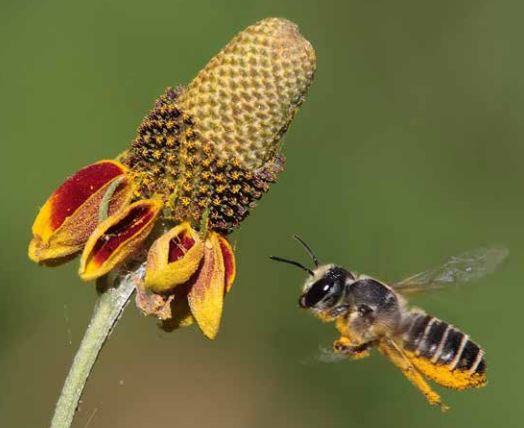Thinking about managing for pollinators for wildlife exemption, tax valuation benefits? Pollinator management is great, betters the land and takes advantage of low property taxes afforded by a wildlife tax exemption on Texas property. This article covers key points regarding managing for pollinators for a wildlife management use tax valuation.
Pollinators & Pollination Matters
Pollination on is one of the most vital processes sustaining natural ecosystems and agricultural production. The majority of flowering plants that comprise Texas’ diverse ecosystems rely upon animals, mainly insects, to transport pollen among flowers to facilitate pollination and ensure the production of viable seed. Viable seed is critical for the perpetuation of plant species across the landscape.
As with native flowering plants, many plants in agricultural production are reliant upon insects for pollination to set fruit and produce seed. The annual value of insect pollinated crops to the U.S. economy is estimated at over $15 billion!
The non-native European honeybee gets the most public attention, but there are actually several hundred bee species that are native to Texas. These include bumble bees, carpenter bees, mason bee, leafcutter bees, longhorned bees and many others. These native bee species are critical to the state’s diverse native plant communities as well as agricultural production.

Tax Exemption in Texas
Technically speaking, there is no such thing as a wildlife exemption — it’s a wildlife tax valuation. When managing for native wildlife and insect species, a landowner is not exempt from paying taxes, rather they are taxed at a low ag tax rate.
Texas property owners can manage for any native species, including non-game wildlife such as songbirds, reptiles, amphibians and small mammals such as ground squirrels or rabbits. If you choose to manage for bees for a tax exemption/valuation, make sure to manage for natives bees! Each property owner must implement at least 3 wildlife management practices to qualify. And in case your curious, managing for fish does not qualify as wildlife management.
Bees:Efficient Pollinators
Of all the insects that visit flowers in Texas, from beetles, butterfiles, moths and wasps, bees tend to be the most efficient and eff effective pollinators. Two traits make bees pre-eminent pollinators. First, they purposefully collect pollen to feed their off spring. The act of foraging for this protein-rich food source results in the transfer of pollen from flower to flower.
During a single day, a female bee may visit several hundred flowers, depositing pollen all along the way. Second, bees tend to be specific about the flowers they visit. During a foraging trip, a female bee may only visit the flowers of a particular plant species. The benefit of such foraging preferences is that the plants’ pollen is not deposited on the flowers of a different plant species and wasted. This benefits the native plants on a property and helps maintain habitat diversity.
Wildlife Management for Bees, Other Pollinators
Many of the berries, nuts and seeds consumed by birds, mammals, and other insects are the result of bee pollination on of native woody and herbaceous plants. Other pollinators do good work, too, so it’s important to manage for the entire cohort of pollinators when possible. This should be considered when developing a wildlife use management plan for a property.
The habitat management practices that are most effective for pollinators are those that maintain flowering plants on the property, preferably throughout the year. Some practices that benefit pollinators include grazing management, prescribed fire (on a portion of the property), range enhancement through reseeding, and brush management to remove thick, unwanted overstory species. Providing supplemental shelter can also be important, when necessary.
In short, landowners can manage for pollinators for wildlife exemption, a tax valuation to maintain a favorable tax rate on their property. Managing for pollinators helps maintain diverse natural systems and also helps the landowner save some money, which can be put right back into the land for additional wildlife, habitat benefits.